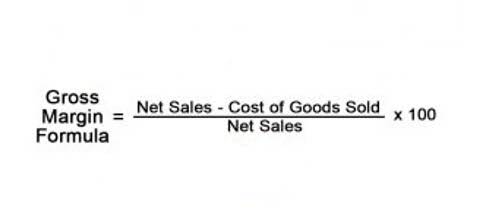
Detection risk occurs when audit procedures performed by the audit team could not locate the material misstatement that exists on financial statements. Assessing inherent risk tends to be a more subjective process than other components of the audit. However, there are often clear and observable factors to consider, such as the economy, the industry, and previously known misstatements that help the auditor arrive at an assessed level of inherent risk for each audit area. Control risk arises whenever a company’s internal practices don’t prevent any misstatements.
Statement of Cash Flows
Audit risk management is a deliberate process, demanding precision, foresight, and a deep understanding of the client’s business and the inherent complexities of financial reporting. Organizations must have adequate internal controls in place to prevent and detect instances of fraud and error. Control risk is considered to be high where the audit entity does not have adequate internal controls to prevent and detect instances https://www.bookstime.com/ of fraud and error in the financial statements. Detection risk is the risk that auditors fail to detect the material misstatement that exists in the financial statements. This type of audit risk occurs when audit procedures performed by the audit team could not locate the existed material misstatement. Thus, the lower the assessments of inherent and control risks, the higher the acceptable level of detection risk.
The Symbolic Dance: Exploring the Role of AI in Cloud Computing
By gaining an intimate knowledge of the client’s business operations, industry nuances, and the external environment, auditors can pinpoint areas susceptible to risk. This comprehensive grasp extends to the client’s internal control systems, providing insights into potential weaknesses that could lead to material misstatements. Their examinations act as managerial tools to identify process and internal control improvements. External auditors often review corporate financial statements and internal controls. In either case, auditors are responsible for identifying any errors and inconsistencies.
Can You Prevent Inherent Risk?
He frequently speaks at continuing education events.Charles consults with other CPA firms, assisting them with auditing and accounting issues. This standard provides new inherent risk guidance, particularly in regard to inherent risk factors. Just one risk factor can make an account balance or transaction cycle or disclosure high risk.
- It is related to the complexity and dynamic of the business and transactions.
- Misapplication or omission of critical audit procedures may result in a material misstatement remaining undetected by the auditor.
- In this blog post, we’ll discuss what audit risk is and how to manage it.
- Since companies usually engage in tons of transactions every year, it is impractical for auditors to go through every one of them.
- If a transaction is so complex and difficult for calculation, there is a higher chance of misstatement in calculation than a transaction that is simple.
Inherent Risk in Risk Management
The more complex business transactions are, the higher the inherent risk the client will have. Staff Training and Standardized Procedures ensure that the audit team is highly skilled and operates cohesively and consistently across all engagements. This uniformity is essential for maintaining the quality audit risk model and reliability of the audit process, reducing the potential for oversight and errors. Regularly updating training programs and procedures also helps the audit team adapt to new regulatory changes and emerging industry practices, thereby staying current and competent in a dynamic financial landscape.
Examples of Detection Risks in Auditing
- An audit risk model is a conceptual tool applied by auditors to evaluate and manage the various risks arising from performing an audit engagement.
- In practice, many auditors do not attempt to quantify each risk component, making it impossible to mathematically solve the risk model.
- The model then uses inherent, detection, and control risks to solve audit risks.
- Residual risk should be controlled within the range of a company’s risk appetite as the inherent risk is often beyond acceptable.
- In navigating the multifaceted landscape of audit risk, auditors employ an arsenal of strategies and tools to fortify the integrity of financial statements.
- Like many other industries, the pharmaceutical industry has adopted cloud computing to improve operations, data management, and collaboration.
- Inadequate internal controls or deficiencies in accounting systems and processes primarily cause this risk.
Acceptable audit risk is the auditor’s level of risk that they are willing to accept to release an unqualified opinion on financial statements that can be materially misstated. Unqualified audit opinions state that financial statements are presumed to be free from material misstatements. The auditor does not control the levels of inherent and control risk and intentionally varies the acceptable level of detection risk inversely with the assessed levels of the other risk components to hold audit risk constant. However, even when not solved mathematically, familiarity with the model makes the following relationship clear to hold audit risk to a specified level. The higher the assessed levels of inherent and control risks, the lower the acceptable level of detection risk will be.

Managing Audit Risk: Auditor Tools to Mitigate Risk


- Control risk, on the other hand, refers to the misstatement of financial statements due to sloppy accounting practices.
- Inherent risk is perhaps the hardest component of the audit risk model to mitigate.
- The convergence of artificial intelligence and cloud computing offers big opportunities for organizations alongside potential security and privacy risks.
- Below are the types of cash flow statements and their exact purpose.
- Additionally, the rapid evolution of an entity’s environment and increasing sophistication of financial products heighten the detection risk.
- It refers to the relationship between the three components of audit risk.
- To maintain a strong defense against emerging cyberattacks, it is also crucial to stay up to date on the most recent threats and solutions.

